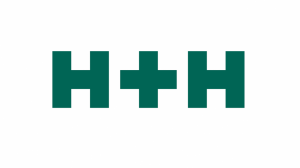ABN Amro hæfter sig ved, at de seneste stigninger i de amerikanske producentpriser i sidste uge viser, at stigningerne i inflationen ikke er overstået. Det er som om, de højere priser bider sig fast. De seneste tal for juli viser, at det især er servicepriserne, der er steget. Banken vurderer dog, at CPI-indekset vil falde i de kommende måneder.
Uddrag fra ABN Amro:
Not yet out of the inflationary woods
US Macro: Producer prices remain stubbornly firm – Following the downside surprise to July core CPI inflation yesterday (which came in at 0.3% m/m; consensus: 0.4%; ABN: 0.2%), core producer price inflation (or PPI) surprised significantly to the upside today, rising 1.0% m/m (consensus: 0.5%).
In contrast to previous PPI surprises, the strength was driven not by goods, but by services. Indeed, while the goods PPI decelerated sharply, to 0.6% (June: 1.2%), the typically much more stable services PPI –which makes up 2/3 of the PPI basket – accelerated to a new record for the index, rising 1.1% m/m (June: 0.8%). On an annual basis, this took services PPI inflation to 5.8%, far above the pre-covid record of 3% reached in December 2018 (note, the index goes back to 2009).
The increase was broadbased across categories. As we have noted before for the eurozone, volatility in PPI inflation is usually not something that causes great concern – it is typically linked to swings in commodity prices, and there is often limited pass-through to consumer prices. Even where there is pass-through, the main discernible link is with core goods, which makes up 18% of the headline CPI basket in the US, or 25% of the core CPI.
In other words, while significant, it is rarely the main driver of inflation. With that said, although there is little historic evidence of a close link between services CPI and the services PPI, the recent acceleration in the services PPI is historically unusual. While we do not expect significant pass-through to the CPI beyond core goods as a base case, it bears close watching as a potential indicator of broader cost-push inflationary pressure.
CPI inflation shows signs of a peak – In the meantime, core CPI has significantly cooled following the recent surge on the back of used car prices. This category made a much more muted contribution in July, and we also saw declines in the cost of car insurance and air travel, amid a moderation in demand (having recovered significantly since the reopening, air passenger traffic has been flat over the past month).
The moderation in monthly core inflation led to a decline in annual core CPI inflation to 4.3% from 4.5% in June, while our measure of core CPI ex-used cars declined to 2.3% from 2.4% in June. Although we saw continued strength in shelter inflation, this category is very much still in catch-up mode following essentially zero rent increases during much of the pandemic period.
While the housing market continues to boom in the US, we find that shelter inflation has a much stronger link with wage growth than with supply/demand dynamics. As a result, we do not expect firm shelter inflation to last much beyond the current catch-up period.
We see scope for further declines in core CPI inflation over the coming months. Primarily, this will be driven by the same factor that has driven inflation to such lofty levels recently – used cars. The Mannheim used car index points to wholesale price falls of around 5% over June and July. There tends to be a lag of around 2 months to retail prices, so we expect a negative drag from this component to become evident in the August CPI report.
However, this effect might be blunted by the ongoing strength in PPI inflation, which could lead to continued upward pressure in other goods categories. Services inflation is also likely to remain firm in the near term, particularly shelter. We will go into greater detail on our inflation outlook in our upcoming Global Monthly, published later this month.











